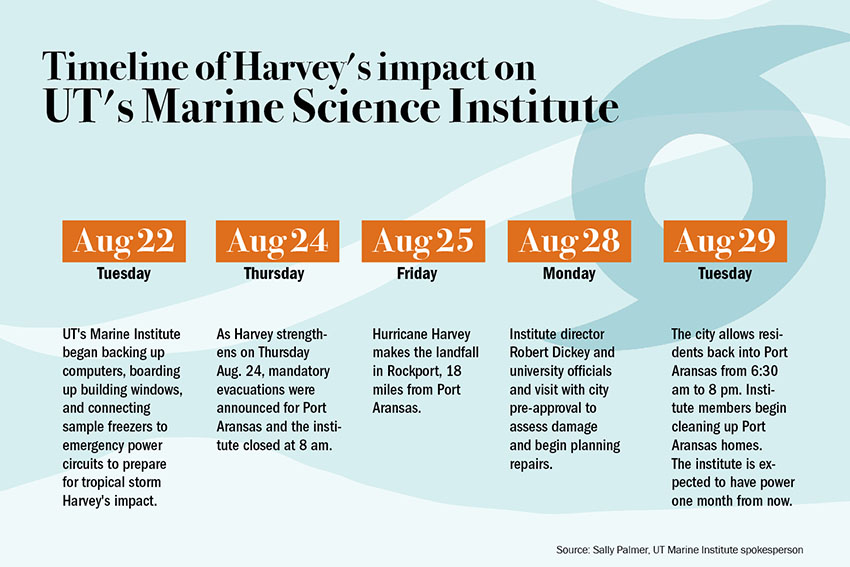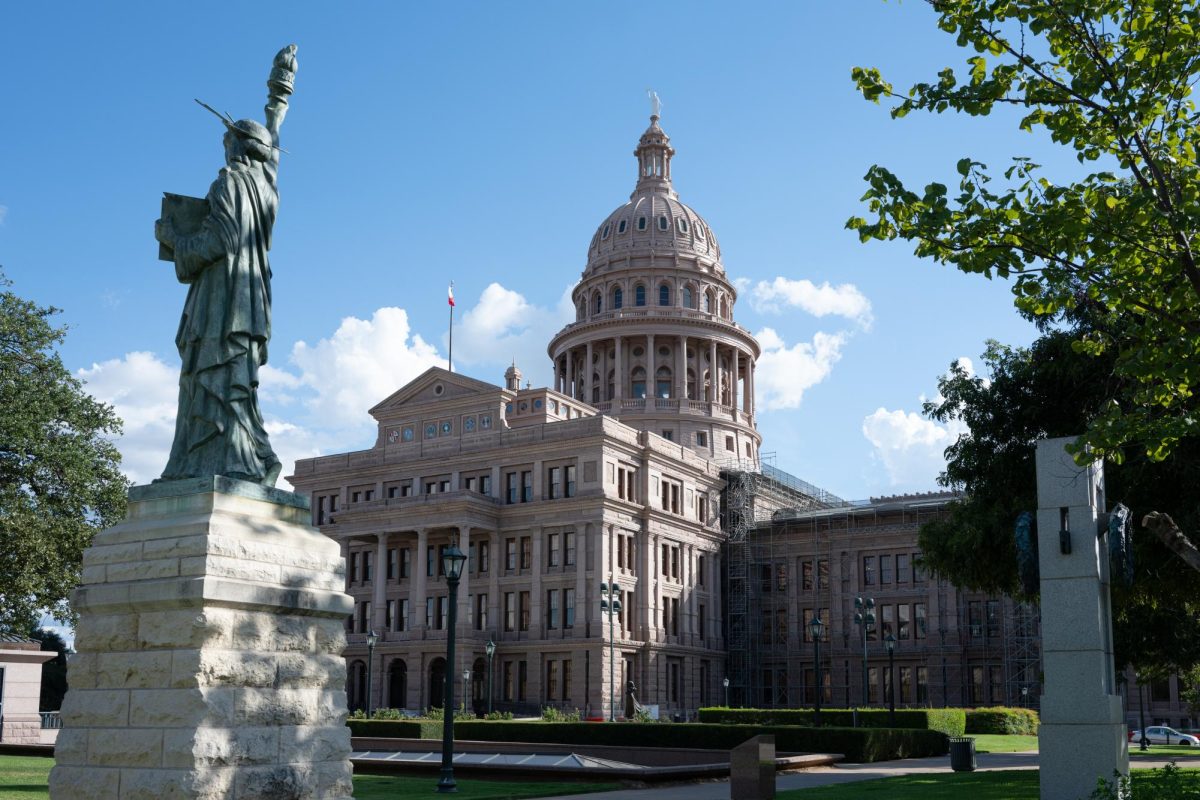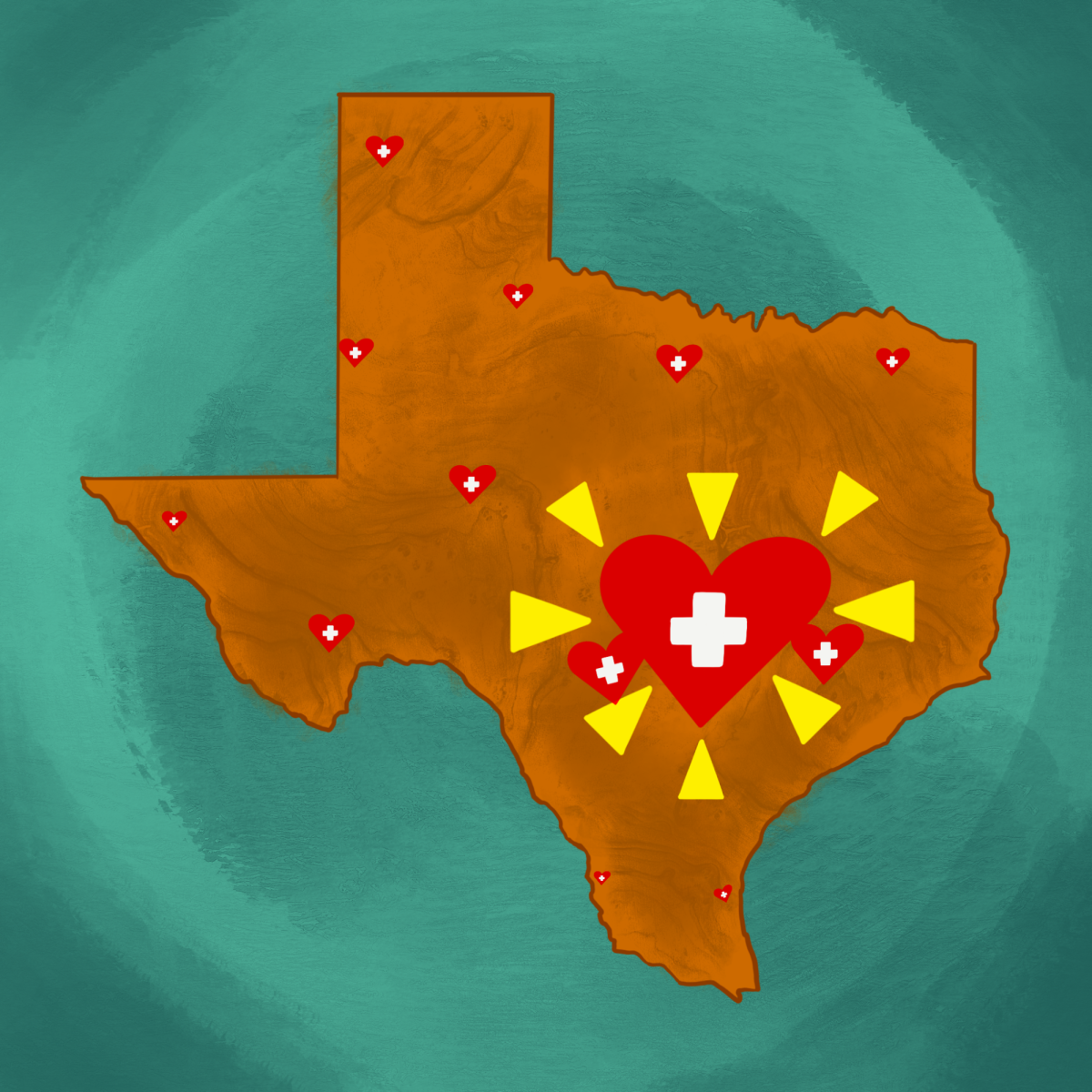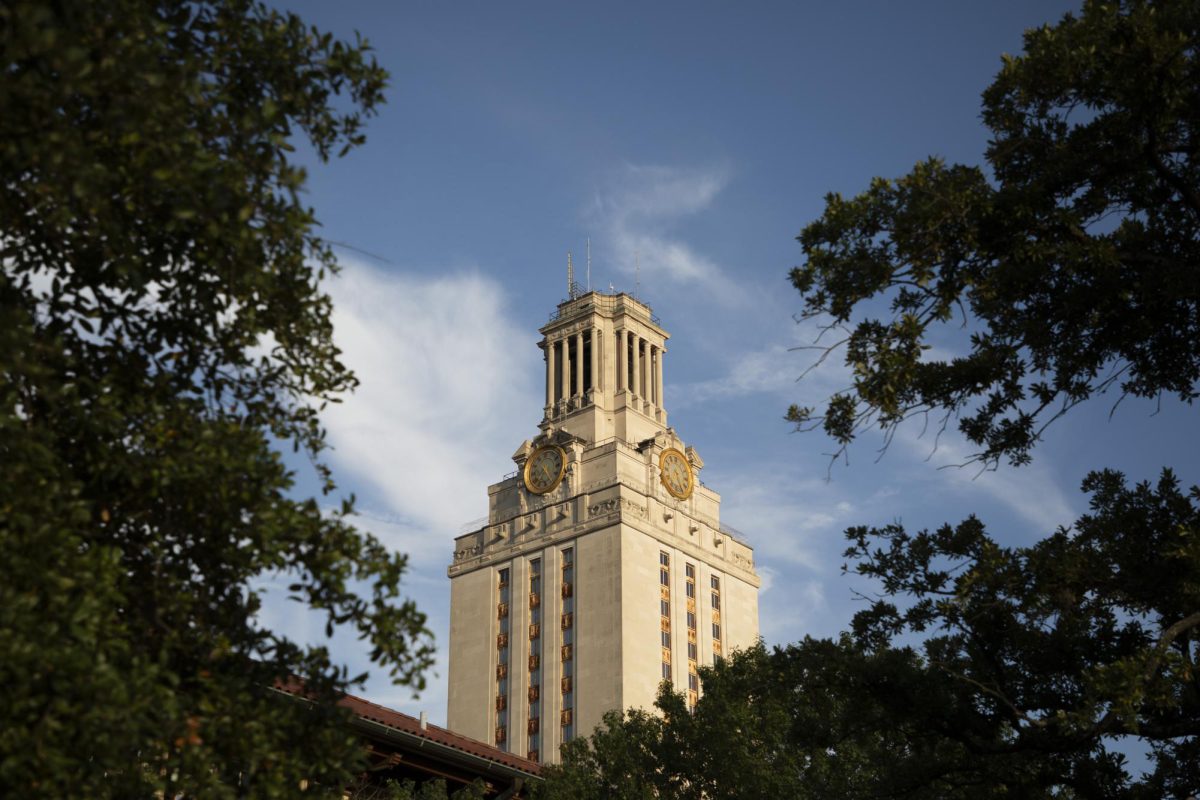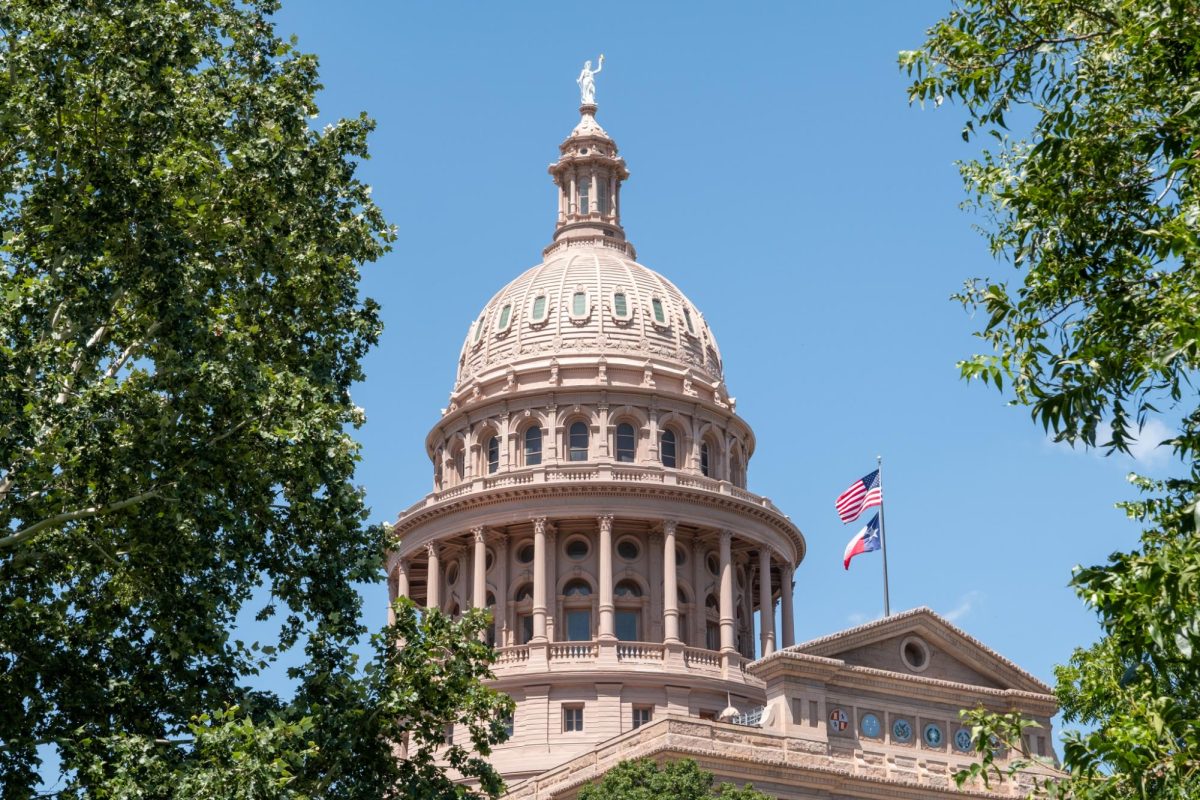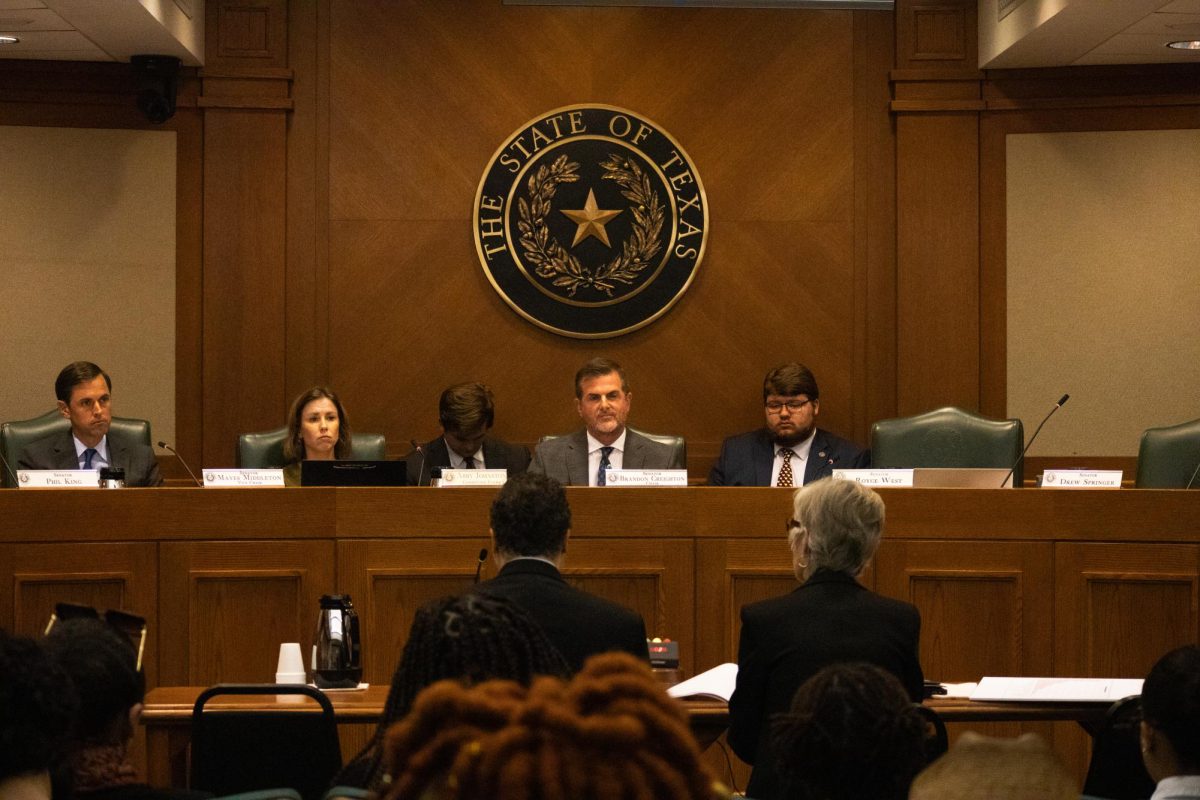All of the students, staff and animals at UT’s Marine Science Institute in Port Aransas survived Hurricane Harvey’s impact last Friday, but the community is now preparing for extensive repairs.
The Institute, which serves as a coastal research, teaching and animal rehabilitation facility for UT’s Department of Marine Science, was shut down Thursday morning, prior to Harvey’s landfall. Roof failures, debris and power outage from wind and water damage currently render the Institute too damaged to reopen at the time.
Institute spokesperson Sally Palmer said all of the Institute’s facilities, including the pier, were impacted, but that the laboratories were the most damaged.
“We had a lot of roof failures and that caused a lot of rain water to come into the laboratories,” Palmer said. “We don’t know the full extent, so we’re hopeful that we do not have a significant sample loss, but we’re still assessing that situation.”
Palmer said 486 students and 130 staff members left the Institute by Thursday, when mandatory evacuations were announced for Port Aransas.
The Institute began preparing for Harvey last Tuesday by backing up computers and connecting sample freezers to an emergency power circuit. Prior to Harvey’s landfall, the Institute released its birds and after the hurricane they transferred sea turtles to other marine life centers.
Biology senior Jenelle Estrada conducted research and mentored at the Institute during the spring and summer, and before evacuating on Wednesday night, she helped prepare for Harvey’s arrival.
“I was there for several months, and it kind of became like my home,” Estrada said. “It’s a very weird feeling to see pictures of these places I was walking by last week that are now kind of just destroyed. So it’s difficult and kind of heartbreaking to watch the destruction.”
Austin-based Institute coordinator Heather Herrick helped relocate seven graduate students and their pets into Austin family homes found through Facebook, so students wouldn’t have to pay for hotel stays. Herrick teared up when she talked about the Institute’s close-knit community.
“These are friends and co-workers of mine that I work closely with everyday even if I’m not down there everyday,” Herrick said. “Seeing how scared and stressed they are, knowing that some of their homes are destroyed, it’s heartbreaking.”
Palmer said UT system police and staff visited the Institute this week to assess damage and prepare insurance claims, but there is still no recovery timeline. The University announced on Tuesday that students and researchers would continue their work at Texas A&M University-Corpus Christi’s Research Institute.
Herrick said despite the negative impacts of Harvey, researchers can still learn from the environmental changes.
“Even this hurricane will be a research opportunity for people,” Herrick said. “There will be things that happen on the coast differently because of it, and people will study and research from it.”
Port Aransas residents were first allowed back on Tuesday, but city leaders do not want them to stay at their homes and implemented a curfew from 8 p.m. to 6:30 a.m. each night. The city implemented the curfew because water, food and electricity are still not available in Port Aransas. Herrick said some Institute members started driving to the city to clean up their homes, but will need help paying for commutes.
The undergraduate Marine Science Club and the department will collect H-E-B gift cards in UT’s Biological Laboratories building to help Institute members get food and pay for gas.
“I know there’s such a strong spirit and bond within MSI and Port Aransas,” Estrada said. “So I really just hope that kind of shows through, and that they’re really able to do these recovery efforts as fast as they can to get kind of back up on their feet.”

